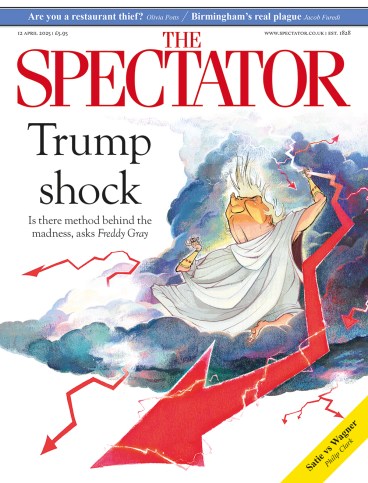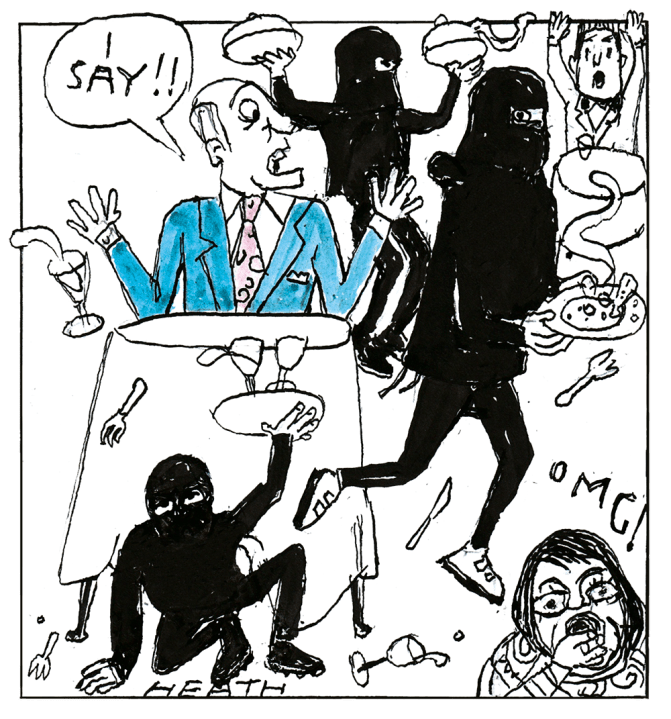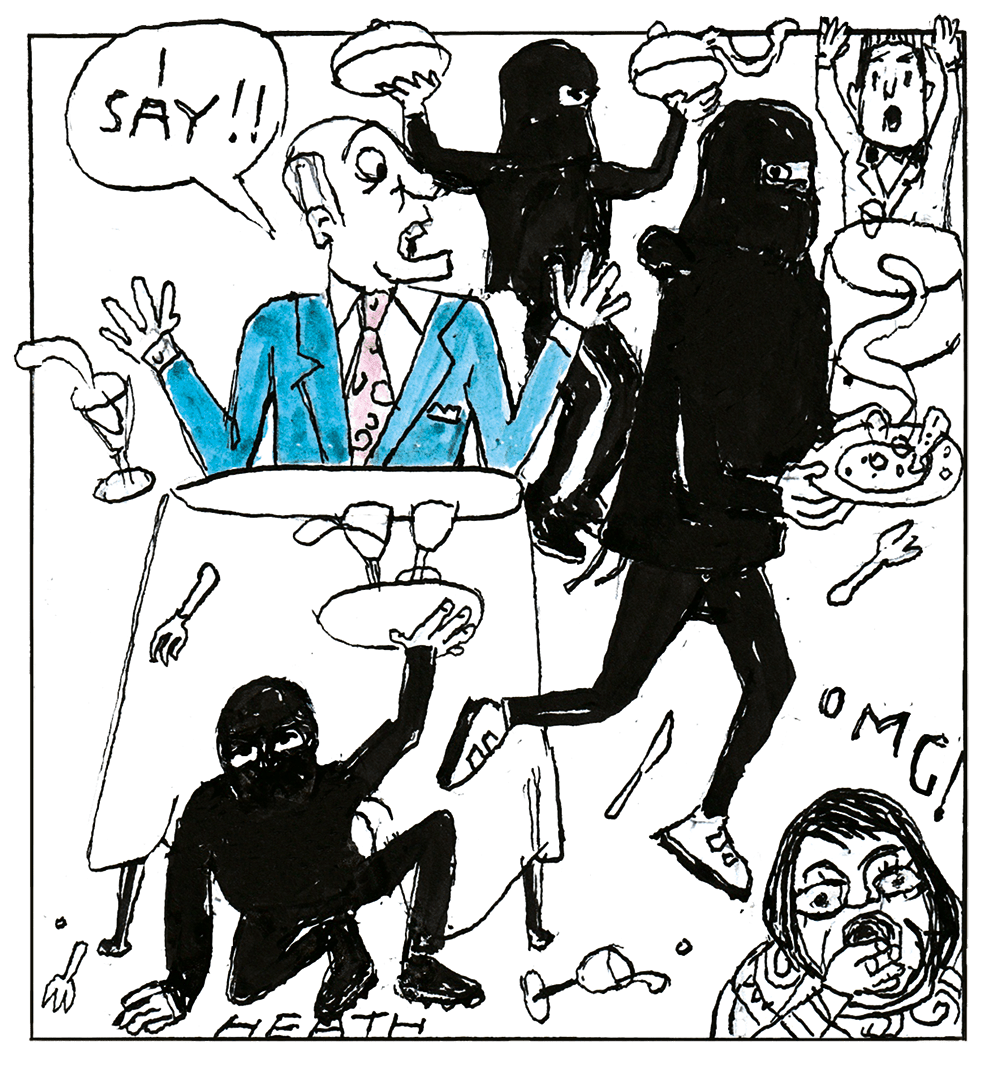
‘You wouldn’t steal a car…’ began the early noughties anti-piracy video. ‘You wouldn’t steal a television… You wouldn’t steal a handbag.’ No, but it seems from reports from restaurants, you might slip some silverware into a handbag if you’re out for dinner.
In February, Gordon Ramsay revealed that nearly 500 cat figurines had been stolen in one week from his latest restaurant, Lucky Cat. The maneki-neko cat models – said to bring good luck – cost £4.50 each, which makes that a loss of more than £2,000 for the restaurant in just seven days.
What is it about dining out that means we think pocketing property is acceptable? People who would never dream of running out on a bill or palming something from a shop seem to have no compunction when it comes to the liminal space of restaurants.
Restaurant theft is not a new phenomenon. Quaglino’s, the fashionable Conran restaurant in St James, marked the tenth anniversary of its opening by offering free champagne to any patron who returned one of the 25,000 ‘Q’-shaped ashtrays which had been stolen during the restaurant’s first decade. Bibendum, another Conran restaurant, was once said to lose 15 of its Michelin-man butter dishes every week.
Fred Smith, head of beef (yes, really) at the steak restaurant Flat Iron, tells me that since its first restaurant opened more than a decade ago, 20,000 of the distinctive miniature cleavers it uses in place of steak knives have been ‘accidentally removed’ by diners. It’s not just the tableware, either; anything not nailed down is seemingly up for grabs, which explains why everything from hand soap to picture frames are now screwed to the wall. In 2012, Jamie Oliver revealed he had been forced to weld on all the flush handles of the Thomas Crapper lavatories at his Jamie’s Italian restaurants because patrons kept unscrewing them and taking them.
It’s not just the tableware, either; anything not nailed down is seemingly up for grabs
According to research conducted by Nisbets, the catering equipment supplier, 17 million Britons say they have stolen an item from a pub or restaurant, while three million claim that every item of crockery, cutlery, glassware and table linen they own is stolen. This seems pretty farfetched, but when I ask my network if anyone has a stealing sin to confess, I am inundated. I am shocked by the number of people who tell me they’ve pocketed a Brasserie Zédel napkin. (Zédel now sells them online at two for £15, diplomatically stating: ‘If you’ve ever ended up with one in your bag or your house “by accident”, you may be pleased to know that we are now selling the Brasserie Zédel napkins.’) Many who confess their crimes say that their theft was to mark a significant occasion, with the item seen as more of a souvenir than a trophy. Others struggle to justify their kleptomania; responses range from the contrite to the brazen.
Is there anything that can be done to stop the thieving? James Ramsden, co-founder of the now-closed east London restaurant Pidgin, remembers chasing a punter down the street after spotting them nab one of the silver pigeon claws that the restaurant used to present the bills. And the supper–club pioneer Kerstin Rodgers tells me of watching a diner put a limited–edition napkin into her bag during an Olympics-themed pop-up, and of sneaking under the diner’s chair to retrieve it. But it’s a tricky one in hospitality, where a confrontation is likely to turn sour, and where the cost per item is relatively low, even if those costs start to mount.
Some places make a virtue out of the swiping: Wahaca, the Mexican street-food restaurant, held ‘spoon amnesties’ whereby its brightly coloured spoons could be swapped for tacos, while The Ivy restaurants have ‘stolen from The Ivy’ printed on the bottom of their chopstick holders. Fred Smith admits that the stolen Flat Iron cleavers probably get people talking about the restaurant if someone spies one on a friend’s cheeseboard at a dinner party. To an extent, it almost works as passive marketing for the bigger restaurants, but smaller businesses are forced to give in. Ramsden explains that the demise of the Pidgin claws was brought about by light-fingered diners: ‘At £20 a claw, it wasn’t worth it, so after a couple of years we stopped having them made.’
When Quaglino’s started flogging its ashtrays as merchandise, the thieving miraculously stopped. There are two schools of thought as to why this might be: the more moral one is that once a concrete price was put on the ashtrays, patrons struggled to justify the pocketing as anything other than theft. The other answer is that, where previously you could only boast one of the ashtrays if you’d dined at the restaurant, once they went on sale, anyone could have one. The cachet was gone. We may be a nation of shoplifters, but we are also a nation of snobs.
Olivia discusses rising restaurant thefts on the latest Edition podcast alongside an anonymous caller who admits to pinching from some cafes…








Comments